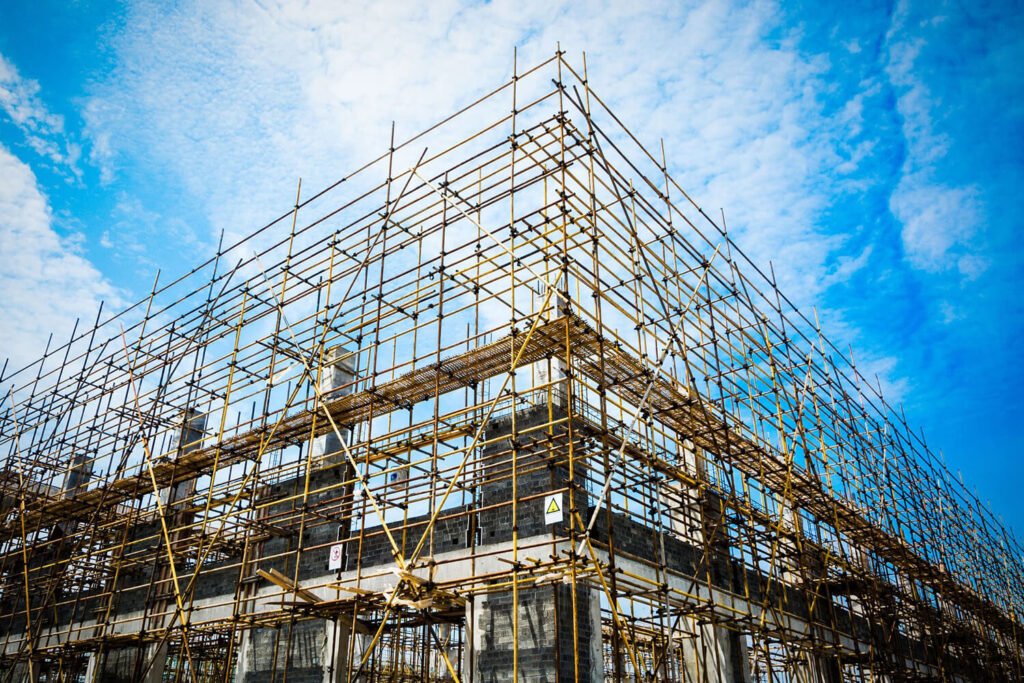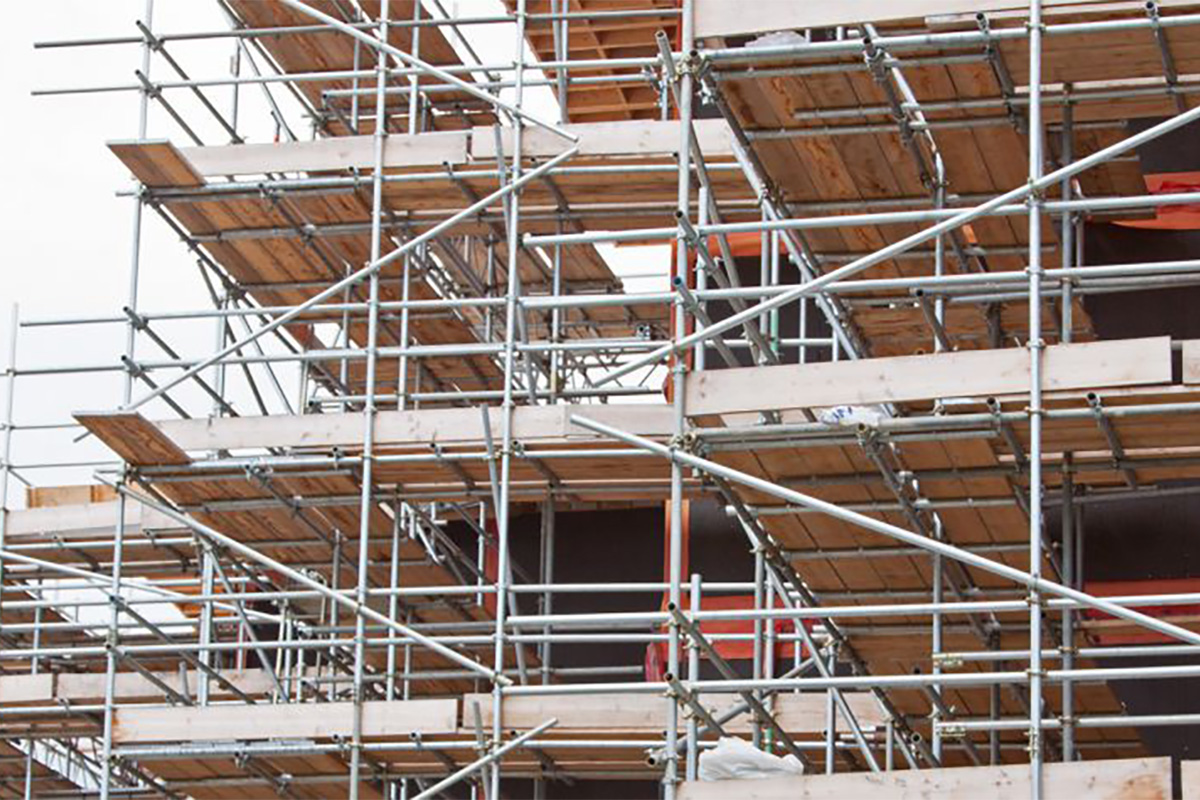Professional Scaffolder Surrey: Your Trusted Partner for Safe Installations
Professional Scaffolder Surrey: Your Trusted Partner for Safe Installations
Blog Article
A Comprehensive Guide to the Crucial Attributes of Scaffolding in Modern Construction
The landscape of contemporary building significantly relies on efficient scaffolding systems that focus on security, development, and performance. As jobs expand in intricacy, understanding the vital features of scaffolding ends up being essential for making sure employee safety and optimizing task timelines.
Types of Scaffolding
Although scaffolding systems can vary commonly in style and application, they usually come under several distinct classifications that accommodate various building needs - Scaffolding. The most common kinds include sustained scaffolding, suspended scaffolding, and rolling scaffolding
Supported scaffolding contains platforms sustained by a structure of poles, which supply a elevated and secure working surface area. This kind is commonly made use of for tasks that call for substantial altitude, such as bricklaying or outside paint.
Suspended scaffolding, alternatively, is used for projects requiring access to high altitudes, such as cleaning or fixing building exteriors. This system hangs from another framework or a rooftop, allowing employees to reduced or increase the platform as required.
Moving scaffolding features wheels that permit for easy movement across a work website. It is specifically valuable for jobs that need frequent moving, such as interior work in big spaces.
Each kind of scaffolding is created with particular applications in mind, making sure that construction jobs can be accomplished effectively and properly. Understanding these groups is critical for selecting the suitable scaffolding system to satisfy both task demands and site problems.
Trick Security Features
Security is vital in scaffolding systems, as the prospective risks connected with functioning at heights can cause significant crashes if not effectively handled. Secret safety attributes are important to make certain the wellness of workers and the honesty of the building site.
Most importantly, guardrails are important. These obstacles provide a physical safeguard versus falls, significantly lowering the risk of serious injuries. Additionally, toe boards are usually made use of to avoid tools and products from diminishing the scaffold, securing employees below.
One more essential part is using non-slip surface areas on systems. This attribute improves grasp, especially in negative weather, thus lessening the probability of drops and slips. Furthermore, gain access to ladders ought to be securely positioned to assist in secure access and leave from the scaffold.
Normal examinations and maintenance of scaffolding systems are additionally important. These evaluations guarantee that all parts are in good condition and working properly, addressing any kind of wear or damage without delay.
Lastly, proper training for all workers entailed in scaffolding operations is important to make certain that they recognize safety protocols and can identify possible hazards. Scaffolding. Collectively, these functions create a safer working setting and substantially mitigate dangers connected with scaffolding
Material Advancements
Innovations in material science have actually considerably influenced the scaffolding market, enhancing both safety and security and performance in contemporary construction. The introduction of high-strength steel and light weight aluminum alloys has changed conventional scaffolding systems. These products are not just lighter, making them much easier to put together and transfer, but additionally offer premium load-bearing abilities. This results in scaffolding structures that can support greater weights while minimizing the danger of collapse.
In addition, innovative composite products, such as fiberglass-reinforced plastics, have actually emerged as sensible options. These products are immune to rust and ecological destruction, thus expanding the life expectancy of scaffolding systems, particularly in harsh climate condition. Making use of such products adds to decrease upkeep expenses and makes certain consistent efficiency in time.


Layout Factors To Consider
Considering the intricacies of contemporary building and construction tasks, reliable scaffolding style is extremely important to making certain both performance and security. Design considerations must encompass numerous variables, consisting of tons capability, height, and the specific requirements of the construction website. Each project presents distinct challenges, requiring a versatile approach to scaffolding systems that can adjust to differing problems.
Structural stability is important; consequently, designers must calculate the loads that the scaffolding will support, consisting of employees, products, and devices. The option of products plays a crucial duty in guaranteeing the scaffolding can withstand these tons while staying sturdy and light-weight. Furthermore, the design has to permit very easy gain access to and egress, promoting the smooth movement of materials and personnel.
Safety and security functions, such as guardrails and non-slip surface areas, must be included to reduce dangers of crashes. The design needs to take into consideration the surrounding atmosphere, consisting of potential dangers and nearby structures. By addressing these style factors to consider, building and construction companies can boost the effectiveness of scaffolding systems and promote a safer working atmosphere, ultimately adding to the general success of the job.
Upkeep and Examinations
The efficiency of scaffolding systems extends past initial layout and implementation; continuous upkeep and regular evaluations are vital to guaranteeing their continued performance and security throughout the duration of a project. Regular assessments need to be carried out by certified personnel to recognize any type of indicators of wear, damage, or instability that might endanger the honesty of the scaffolding.
Maintenance procedures should consist of routine checks of architectural anonymous parts, such as planks, structures, and installations, making sure that all components stay free and safe and secure from rust or other wear and tear. In addition, the capability of safety features, such as guardrails and toe boards, need to be evaluated to make sure compliance with safety regulations.
Documentation of all assessments and upkeep tasks is critical for liability and regulative compliance. A methodical approach to record-keeping not just help in tracking the problem of the scaffolding yet additionally supplies necessary proof in case of a case.
Inevitably, establishing an extensive maintenance and examination routine will substantially reduce the threat of accidents and enhance the general safety of the building and construction site. By focusing on these techniques, building and construction supervisors can safeguard employees and promote the task's integrity.

Conclusion
To conclude, the vital attributes of scaffolding in modern construction encompass a variety of critical elements, consisting of diverse types, crucial safety mechanisms, product linked here advancements, and thoughtful layout factors to consider. Highlighting security with guardrails and non-slip surfaces, together with innovations in materials like high-strength steel, enhances both performance and sustainability. Routine upkeep and inspections are vital for ensuring architectural honesty and safety on building sites, ultimately promoting effective task implementation and advertising the wellness of workers.
The landscape of contemporary building significantly relies on effective scaffolding systems that focus on safety and security, performance, and advancement.Innovations in material science have substantially affected the scaffolding market, improving both security and efficiency in contemporary construction. Overall, these material innovations not just improve the performance and security of scaffolding systems but also line up with the market's push in the direction of sustainability, as several contemporary products are created to be much more ecologically friendly.
Considering the complexities of contemporary building projects, efficient scaffolding design is paramount to making sure both functionality and safety and security.In verdict, the crucial functions of scaffolding in modern construction incorporate a variety of vital aspects, including diverse kinds, vital security devices, product advancements, and thoughtful design factors to consider.
Report this page